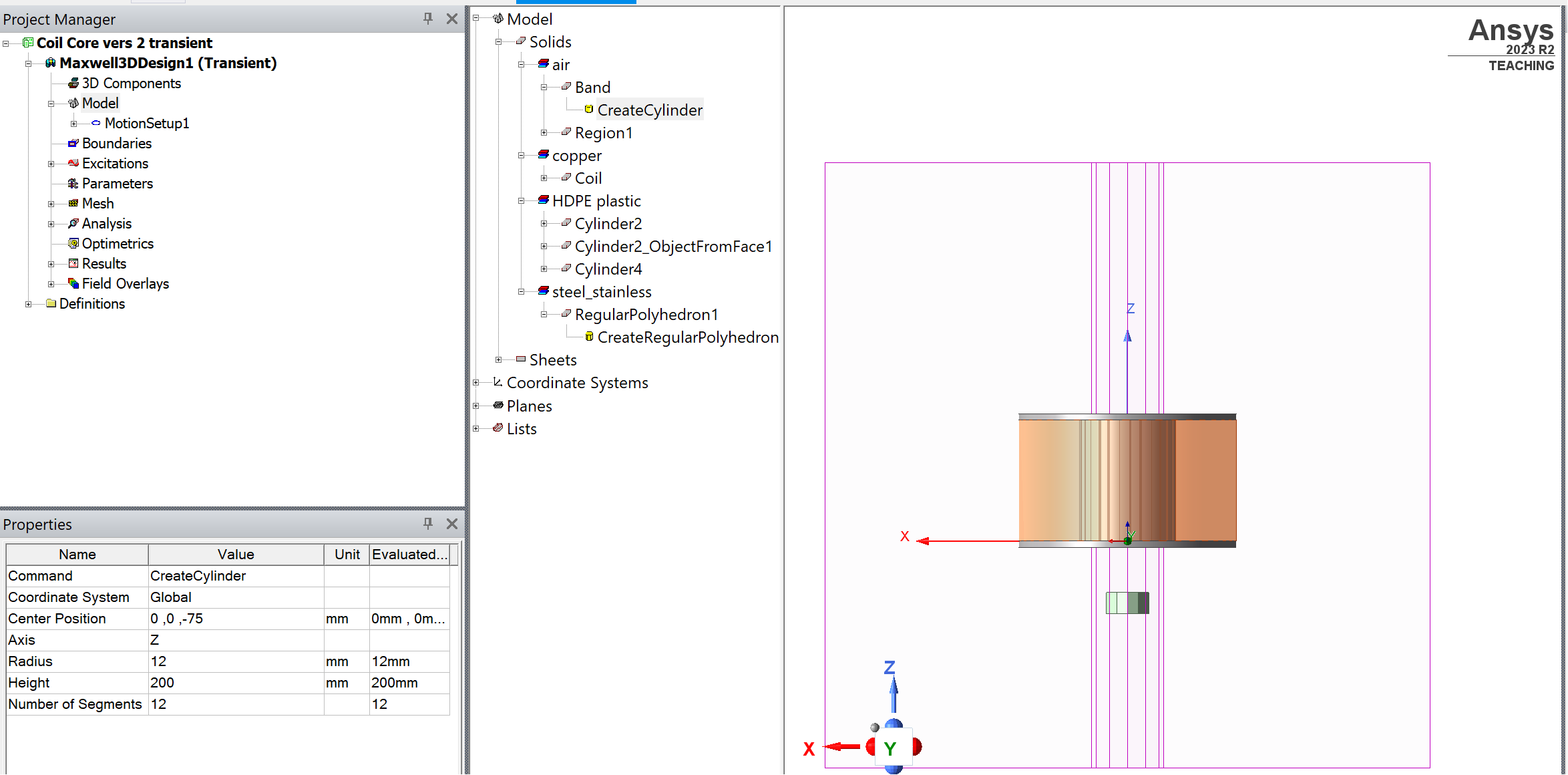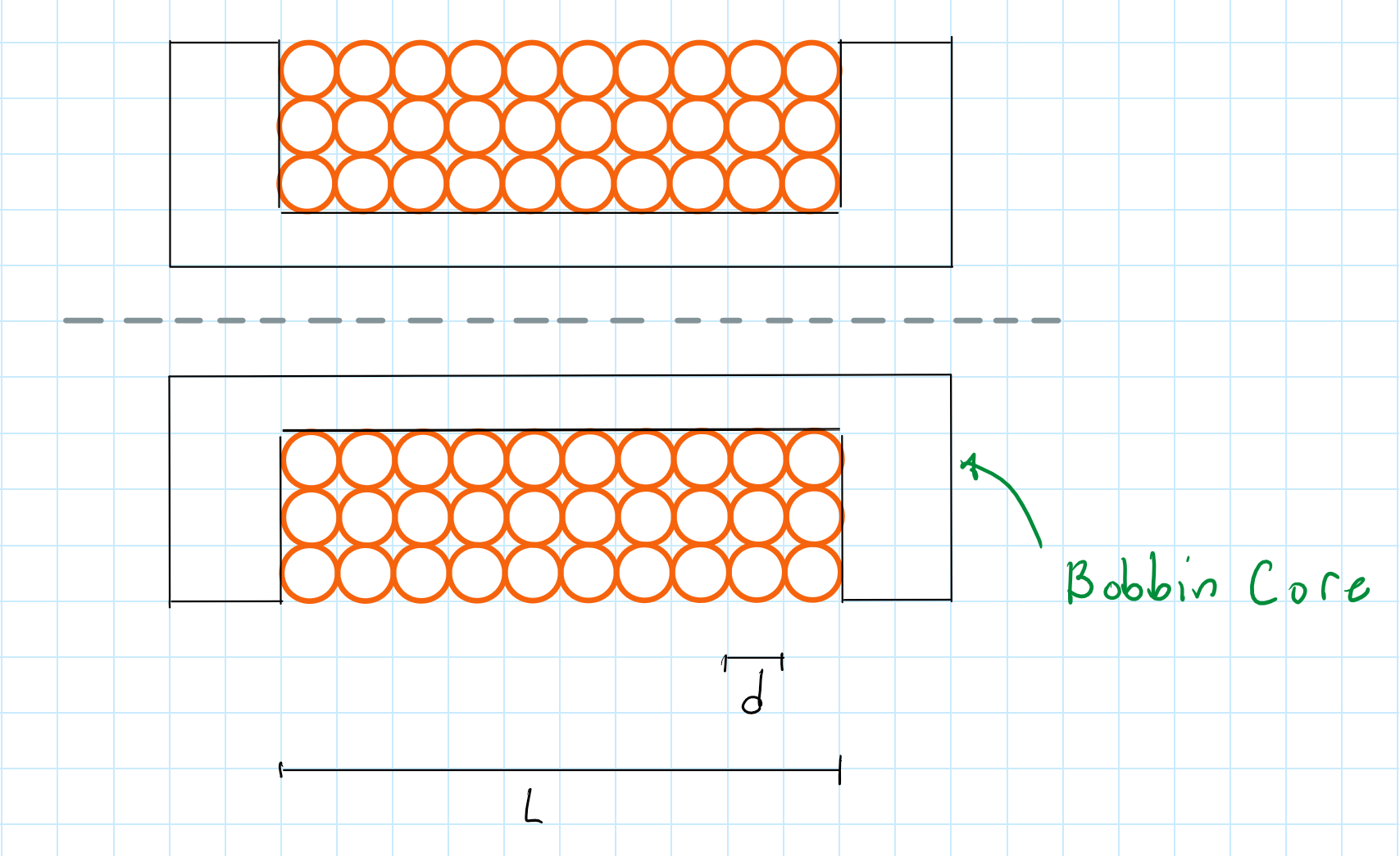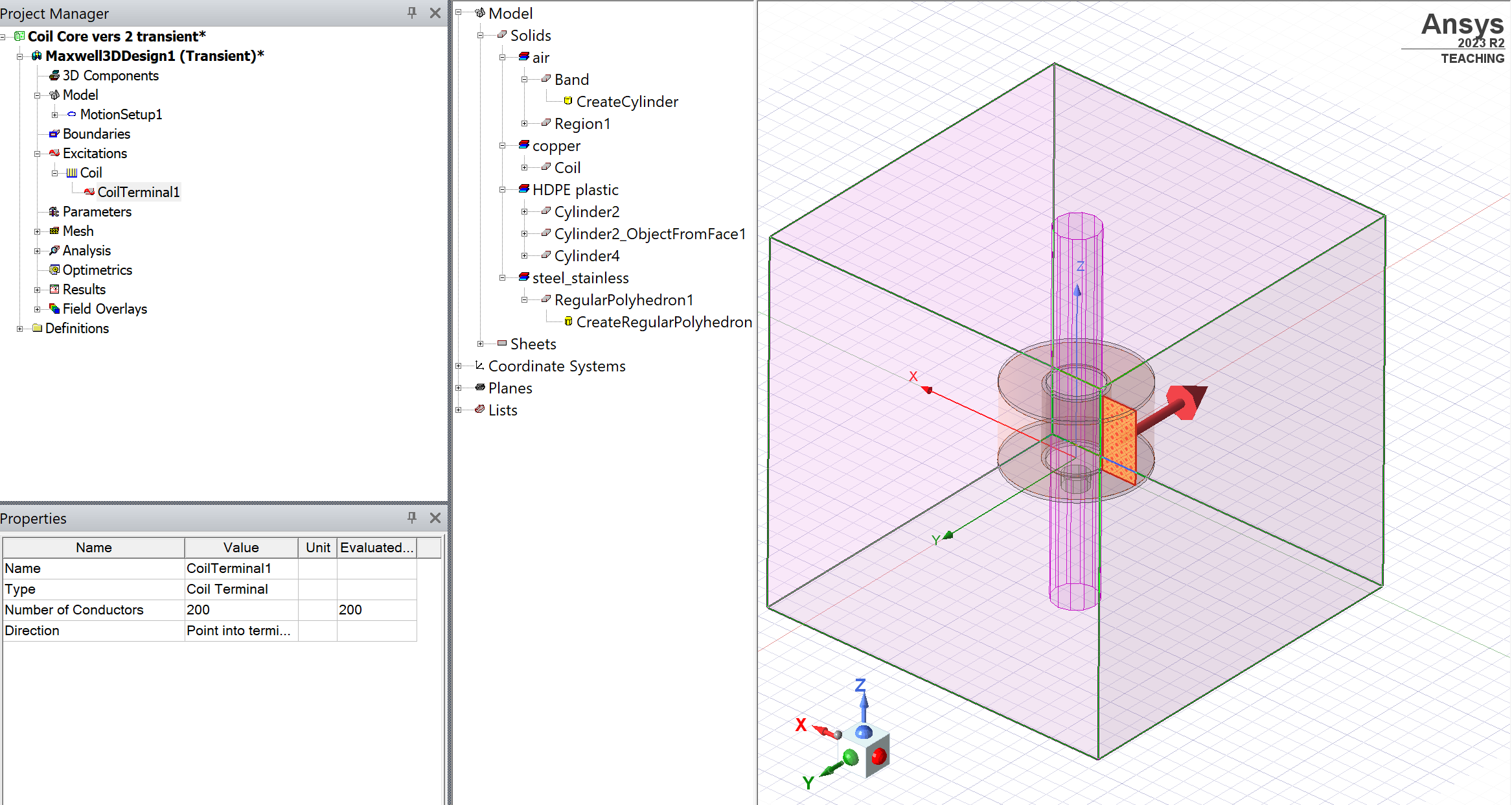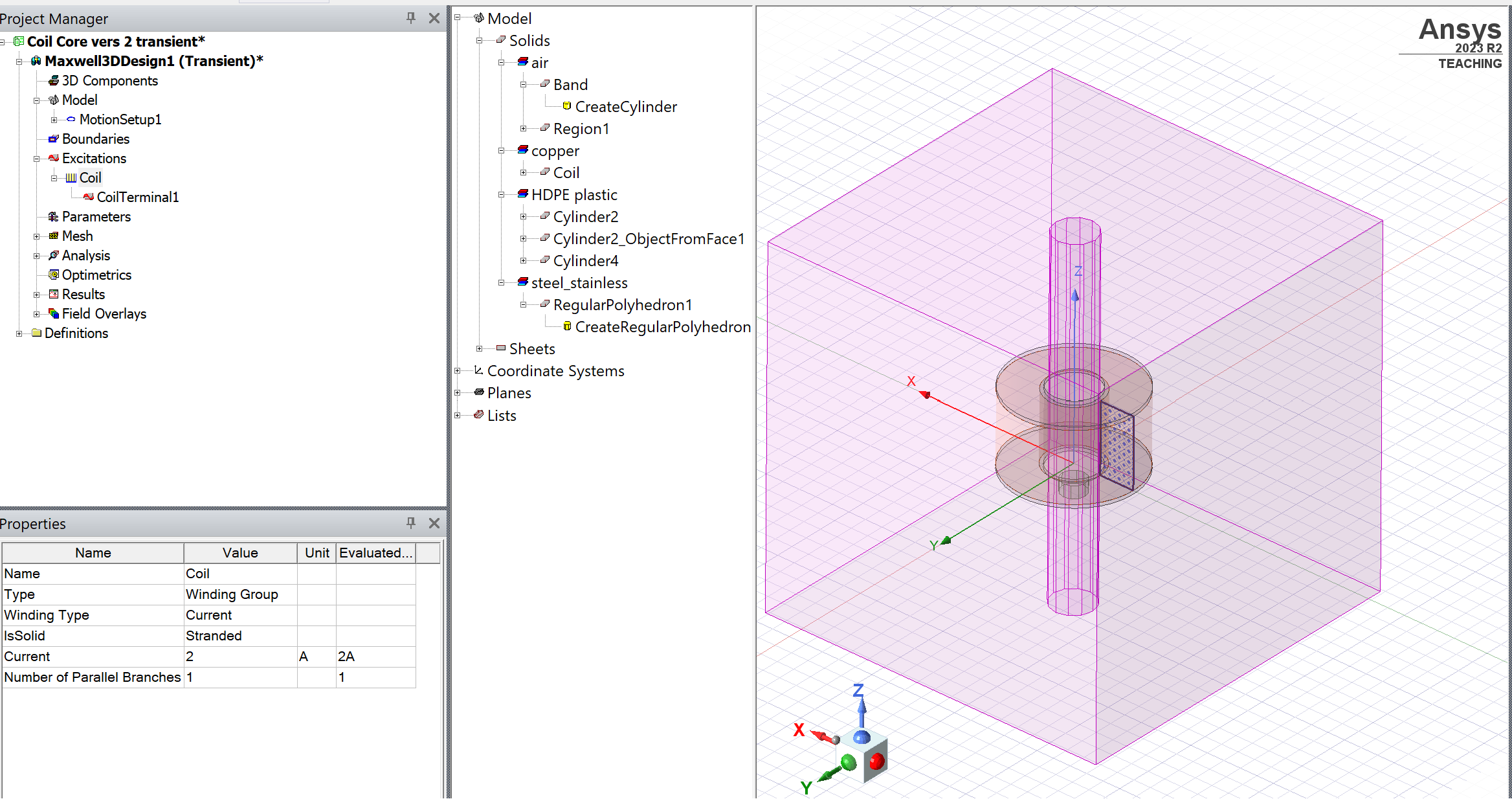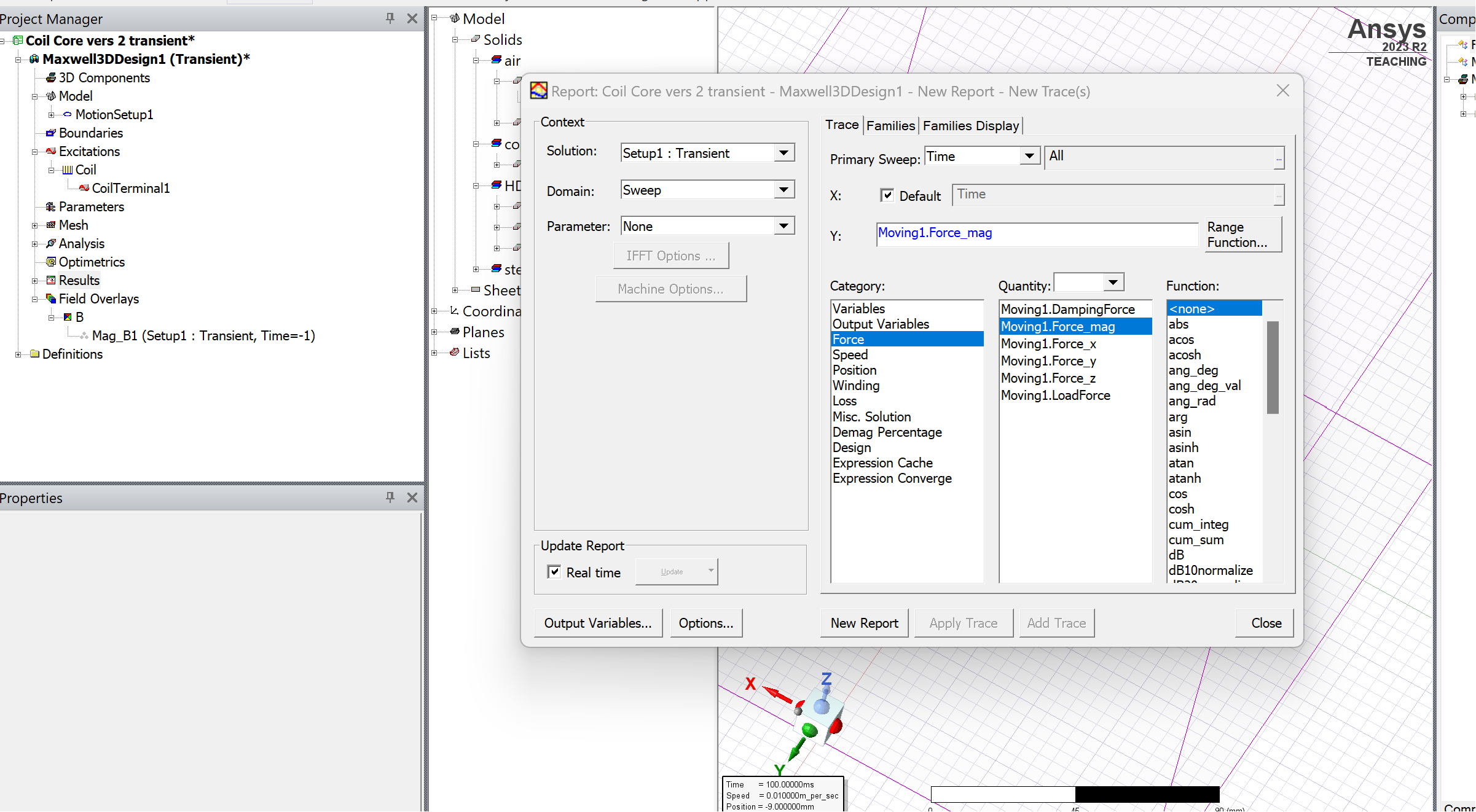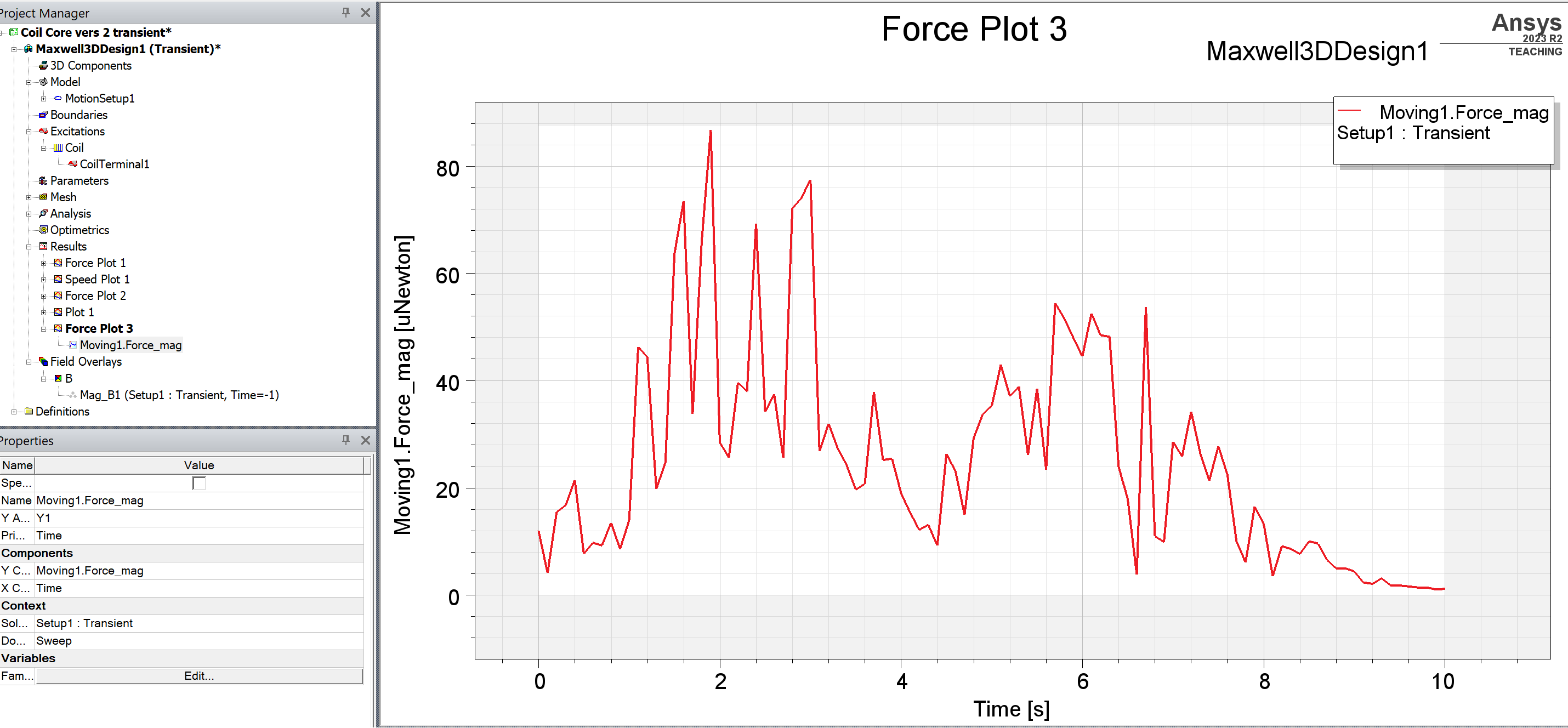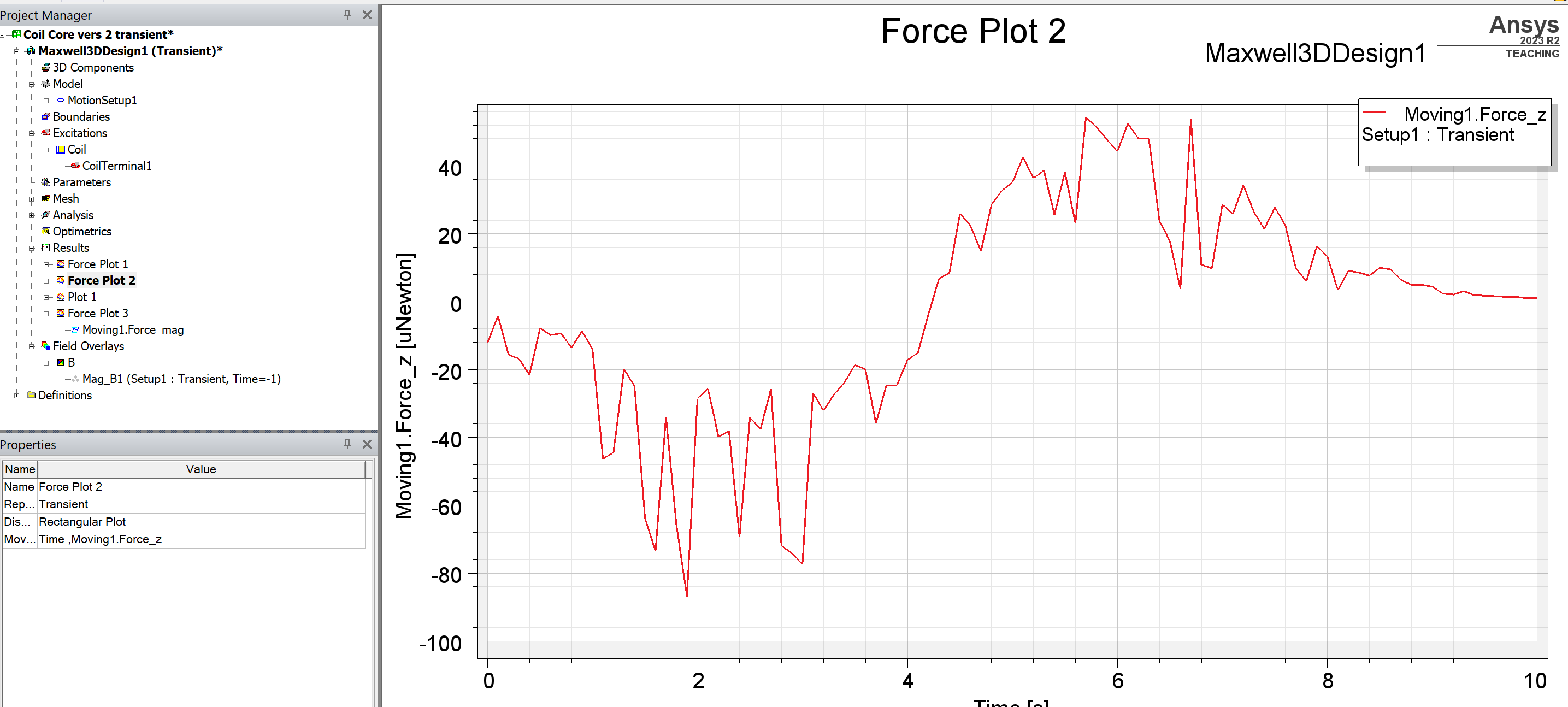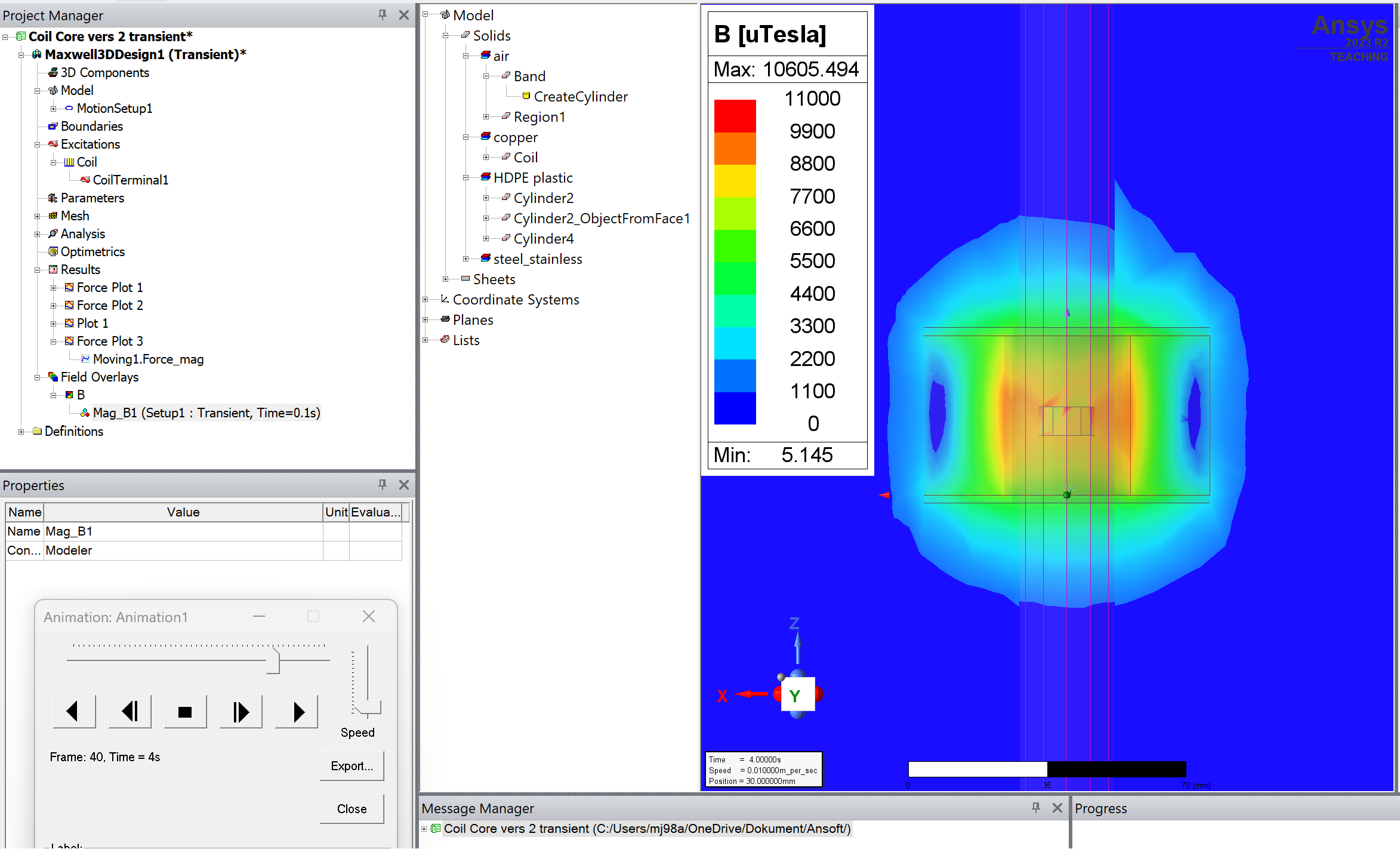TAGGED: -Ansys-Maxwell-electronics, maxwell
-
-
December 7, 2023 at 6:51 pm
Marcus Johansson
SubscriberHi! English is not my native language, and I am working on a small project designing a coilgun for a steel ball using Ansys Maxwell. I have watched some tutorials on magnetostatics.
I have two questions regarding the coilgun with copper wires that I'm unsure about:
Stranded coil - Is it really a coil with copper wire with multiple layers of N turns, similar to an ordinary coil core? If so, how does it take into account wire gauge, ohmic losses, and winding tightness, etc.? Edit - I meant current excitation with type stranded
For eddy current, I am planning to use a capacitor as a source for the coilgun for a steel ball. Can I really use it when eddy current involves AC current?
Another question
Where can I find calculations for the magnetization of the steel ball, as well as for the force and velocity it experiences?
Thanks for the help!????
-
December 8, 2023 at 9:33 pm
HDLI
Ansys EmployeeHello Marcus,
1. With stranded winding or current, we could not consider resistance that user has to do manually.
2. To use capacitor, Maxwell external circuit is required.
3. When plotting flux density, we could check magnetization of steel ball. We could set parameter > force for the force calculation. You need to use transient solver for velocity.
HDLI
-
December 13, 2023 at 1:01 am
Marcus Johansson
SubscriberHi!
Okay,v
I have now more several questions and right now
1. I’ve completed a tutorial on transient analysis. The tutorial specifies that a spherical steel ball cannot be used due to the cylindrical nature of the motion setup. Instead, a polyhedron is recommended for both the band and the steel ball. Both the polyhedron band and steel ball consist of 12 segments each, as shown in the picture below. Is this accurate? See in the picture below here:
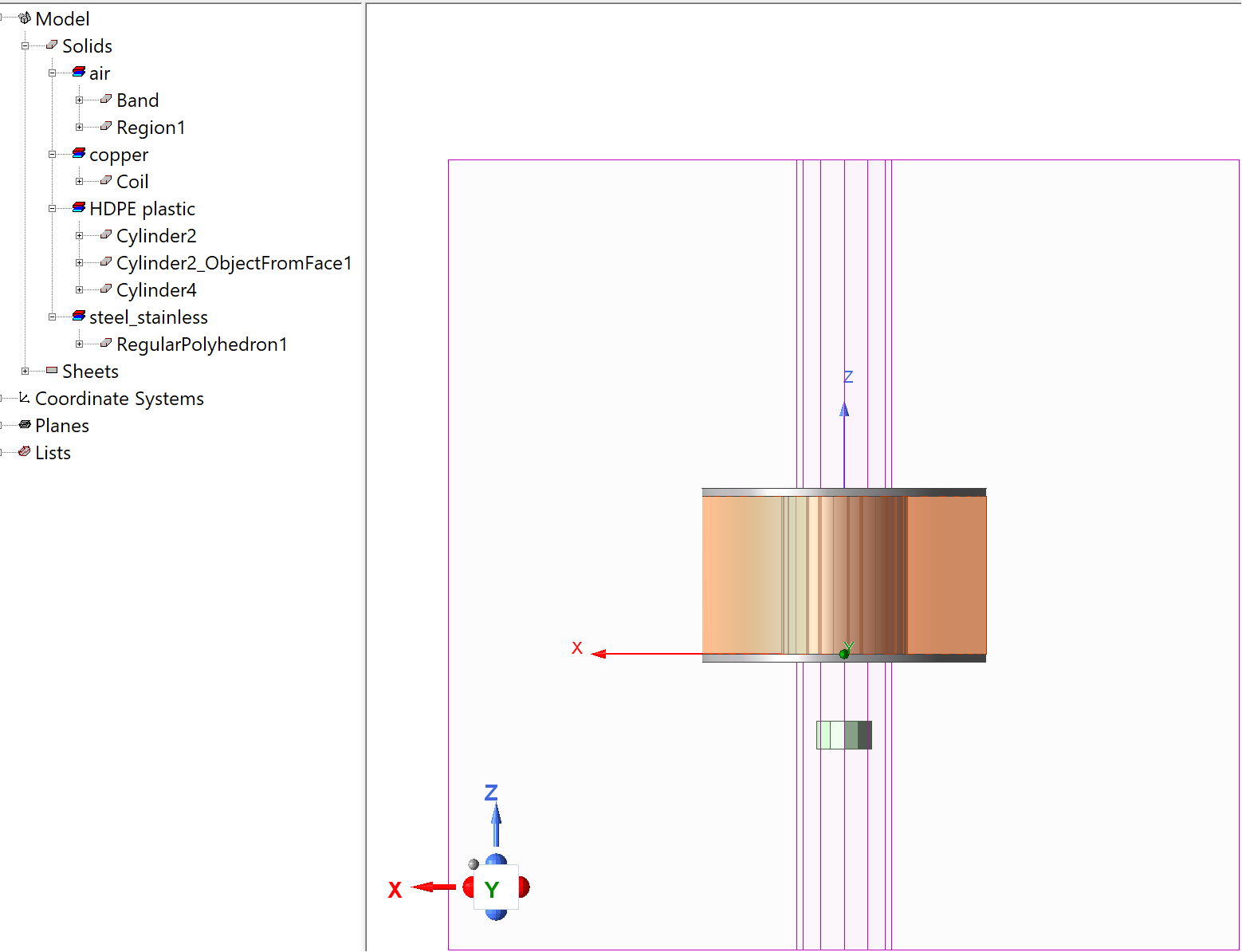
2. During transient analysis of the figure, the polyhedron steel ball is observed to travel only from its initial position in the figure to the midpoint of the coil core. why? See below the picture for the band property:
the motionsetup properties: I cannot make positive position larger because I would get error: “Positive motion is too large”
4. I think I might be mistaken in my approach to excitation and the number of conductors. I am attempting to create a coil featuring a single copper wire with n turns and multiple layers, as in the figure below.
Here are the properties for the Excitation
Properties for the Coilterminal1
Properties for the Coil
5. When doing simulation and want to check the magnetization and the force of the “polyhedron” steelball , I am not sure where I can find it or how exactly how to do it, this is what I did for now:
I clicked the following: Maxwell 3D -> Results -> Create Transient Report -> Rectangular Plot
this is what the plot of mag force shows which kind of looks very weird for me… also note: The steelball only goes halfway through the coil
-
-
December 13, 2023 at 2:02 am
Marcus Johansson
SubscriberContinuing here:
The plot for Force z shows here which is also a bit weird looking
6. Magnetic field magnitude
With animated one here below, and it show magnitude B=10 mT
The "polyhedron" steelball as I said above does not go through the coil core completely.
No animation: B magnitude shows 8,6 mT why? and it seems that polyhedron "steelball" does not affect the magnetic field despite having material stainless steel why?
So far this, I have not fully understood this simulation program Ansys yet, so I have probably made many mistakes and still don't know how can I exactly get the magnetization for the steelball and the velocity?
-
- The topic ‘Beginner – Coilgun Simulation’ is closed to new replies.



-
3362
-
1042
-
1030
-
871
-
826

© 2025 Copyright ANSYS, Inc. All rights reserved.

